The major scale is a 7 note sequence, where the distance between each note follows a set pattern. You can play a major scale starting on any of the 12 notes, and it will generally sound the same. This is because you’re always following the same pattern, even if your starting point is different.
The notes in each major scale are give us the “notes in key” per whatever note we start with. For example, if we construct a major scale starting on the note C, we’ll have the 7 notes found in the Key of C major. All chords and melodies we might play (within the Key of C major) are built using the 7 notes in the C major scale.
No matter which of the the 12 notes we start with, we can construct a major scale using the following pattern:

We might also see this pattern labeled as follows, using “tone” and “semitone” instead, but note it’s the same pattern:

Or, we can use these crude, informal terms just to hammer things home. Again, this is the exact same pattern shown in the previous examples:

Terminology aside, using the singular pattern shown in all examples above will give us a major scale that’s in the key of whatever note we start with. For example, if we use this pattern starting on the note C, we will be given a C major scale:

And thus, the notes in the Key of C Major are as follows. Notice how there are no sharps or flats in the Key of C — it’s the only major key where this is the case.

Just to hammer things home, let’s look at how we can use the same pattern from other starting points.
Here’s the major scale starting on G (which has one sharp).

Here’s the major scale starting on D (which has two sharps):

Here’s the major scale starting on A (which has three sharps):

Here’s the major scale starting on E (which has four sharps):

These examples, plus the Key of C major (shown earlier), give us the 5 most common major keys used when playing guitar. Said another way, here are notes in the major scale for the the keys of C, G, D, A, and E:
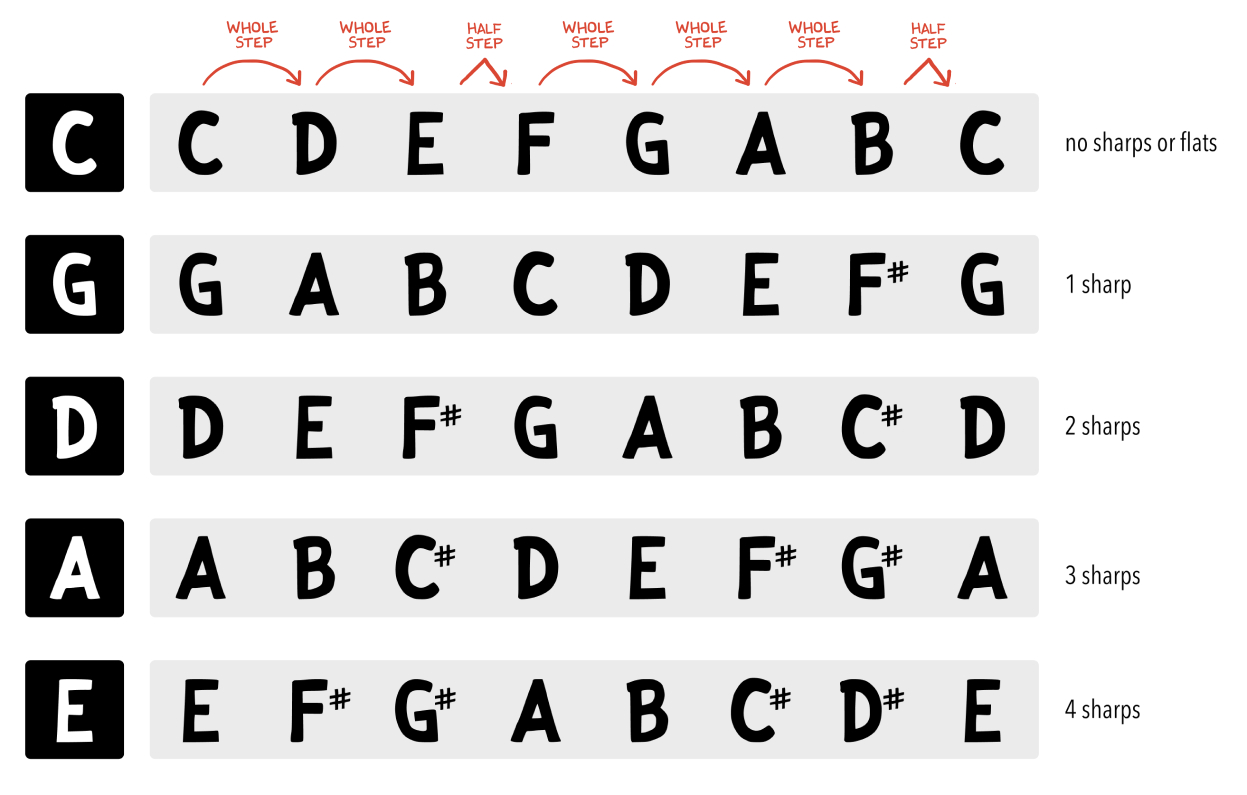
In the examples above, you may have noticed that some of the notes have sharps. Why didn’t I use the equivalent name for that note with the flat? e.g. for the G major scale, why did I use F# for the 7th note, and not G♭?
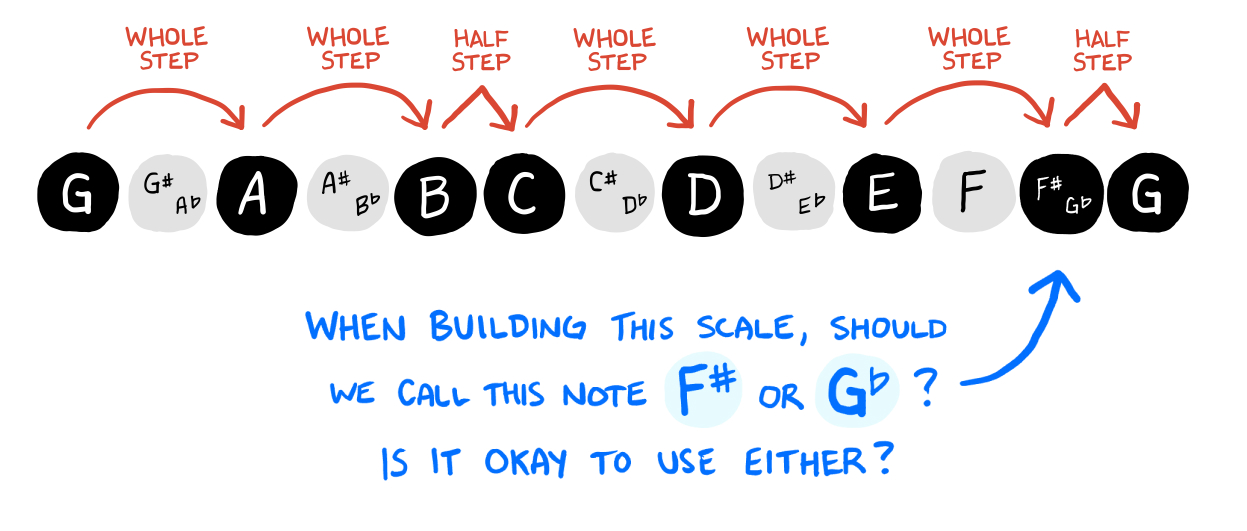
The answer: when building the major scale, there’s a convention or “rule” of using one occurrence of each letter A-B-C-D-E-F-G (sharps and flats notwithstanding).
In the previous example, we already have a G in the first note of the scale, so for that 7th note we’ll use the letter F instead (which in this case, is the note F#). This works perfectly, because we don’t have the letter F in this major scale yet.
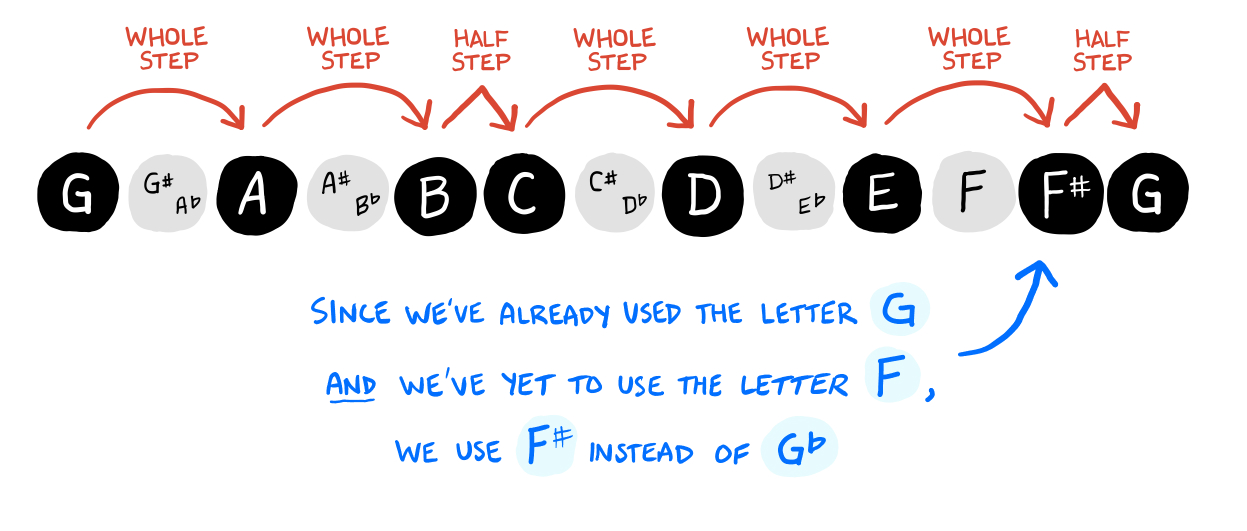
Re-examine all of the examples above (Key of D, Key of A, Key of E, etc) — and notice how there’s exactly one occurrence of A-B-C-D-E-F-G in each scale… and no circumstances where any letter occurs twice.

You can construct a major scale from each of the 12 notes. Which again, gives us the notes in each of the 12 major keys. Here’s the complete table, if you’re curious:
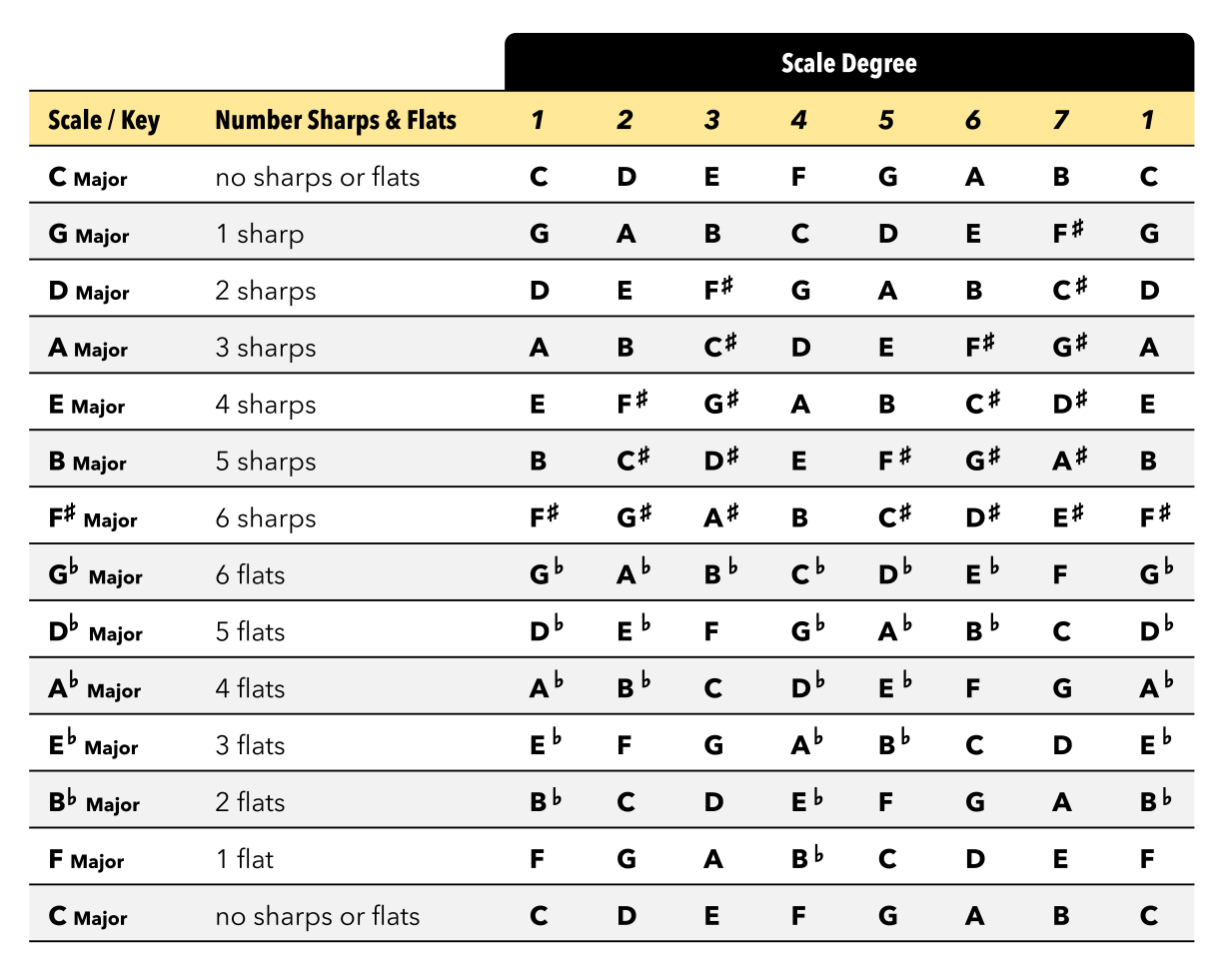
But please note, a vast majority of the time you’re going to be playing guitar in the Key of C, G, D, A, or E — especially when playing popular music (rock, country, folk, etc). So don’t feel like you need to commit this table to memory!
A topic I’ll tackle in my next lesson is scale degrees, which refers to the sequential number of every note in the major scale. Quite simply, 1-2-3-4-5-6-7 (spoken as one, two three, four, five, six, seven). After 7, things restart again at “1” — or you might see “8” used in some rare cases.
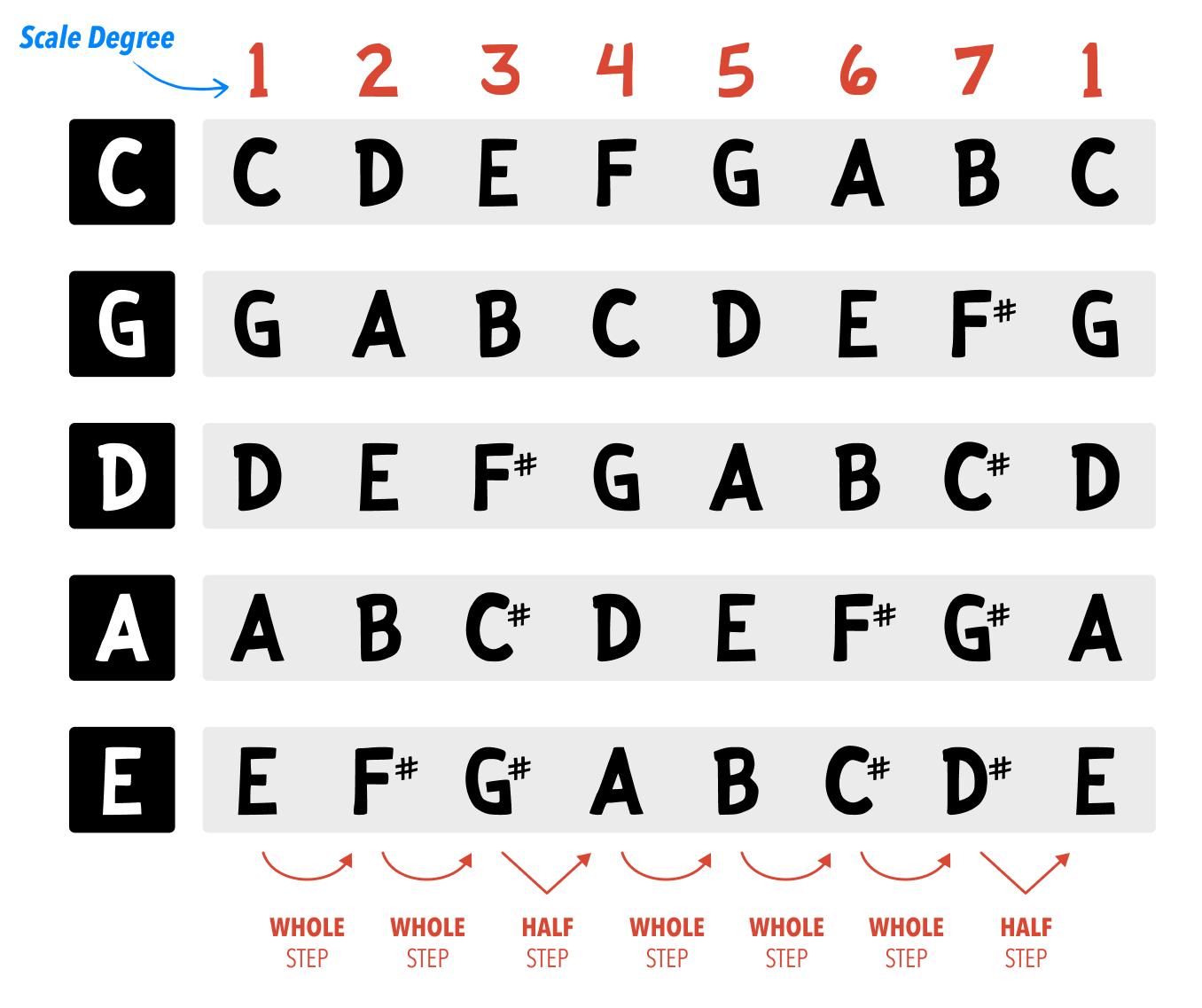
Using the scale degree can be incredibly helpful, as it can let us refer to specific locations in the scale using the note’s number instead of note’s name. There’s many circumstances where this is helpful… which I’ll show you next!
There’s a few concepts I think are worth remembering:
The “Sound” of Each Major Scale is The Same - differences of pitch aside, each major scale has the same “quality” to the ear. For example, we could sing Happy Birthday in any major key, and everyone listening would recognize it as the song Happy Birthday.
Every Major Scale Uses the Same Pattern - as I noted above, there’s just one pattern that every major scale is built with. This is absolutely worth committing to memory (i.e. from any starting note, travel whole-whole-half-whole-whole-whole-half).
7 Notes Per Each Major Scale - while Western music has 12 notes total, note we’re only using 7 of them for each major scale. No two major scales share the same 7 notes.
Scale Degrees refer to the number of each note in the major scale (1-2-3-4-5-6-7). In future lessons this will be very important, as we can refer to these numbers to more intuitively shine a light on certain concepts — such as building chords, melodies, or other scales.
Each Major Scale Uses A-G Exactly Once - if we ignore sharps & flats, notice how every major scale has one occurrence of the letters A through G. This is actually what determines if we use sharps or flats, in any given major key — as the goal is to avoid a situation where one alphabet letter is used twice.